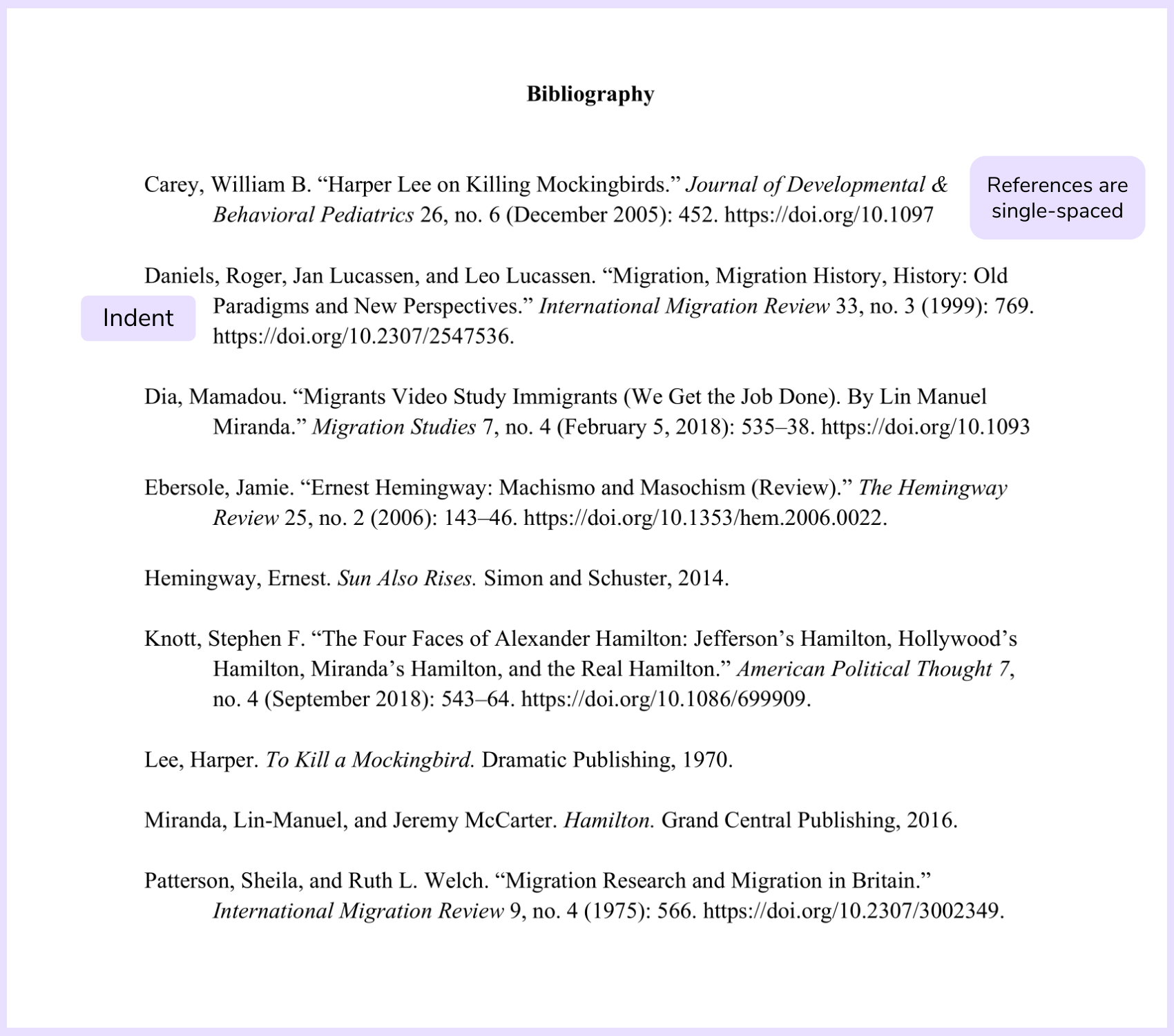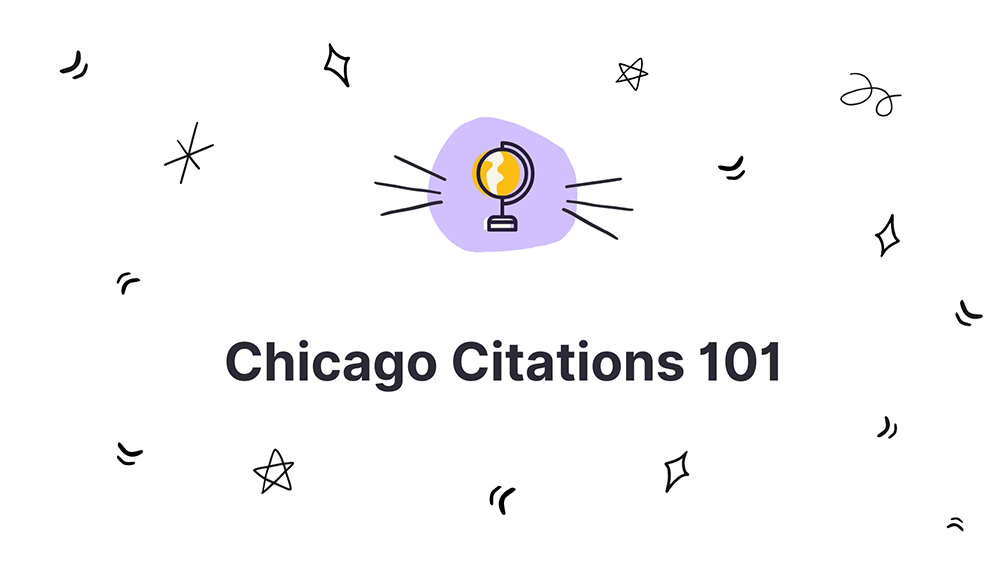Home to America's pizza, jazz music and art, Chicago also happens to one of the world's most popular citation formats, beloved by millions of students who frequently create citations or bibliographies. Unlike other citation formats such as APA or MLA, Chicago style provides comprehensive guidelines for writing academic papers in the field of history and other social sciences.
Why is Chicago such a popular format for generating citations?
Why do students and researchers all over the world prefer to use Chicago style in their work? Because Chicago is one of the few common citation formats that let you use footnotes instead of in-text citations. This is why the Chicago style is especially popular among historians who have to cite hundreds of primary sources so using footnotes instead of in-text citations helps make their writing more concise and clear.

Chicago Style Basics
Chicago-style source citations have two varieties: footnotes and in-text citations. Even though Chicago in-text citations are sometimes used in the social sciences, in this guide, we will focus on using footnotes or endnotes and creating a bibliography found at the end of the paper.
Let's a quick overview of the two types of Chicago citations:
Footnotes or endnotes: When using a direct quote or paraphrasing someone's ideas in your work, you have to cite your sources in numbered footnotes or endnotes.
Bibliography references: A separate bibliography (or a reference list) should be found at the end of your paper and contain a complete list of all the sources used in your work.
Basic guidelines for formatting your paper in the Chicago style:
Chicago title page. The first page for your paper should include your essay title, your name, class information, the name of your instructor and the due date. The title of your essay should be centered and located about one-third down the page.
Page numbers. Remember to insert page numbers in the upper right-hand corner of each page (including the title page).
Main body and page layout. Your paper should be double-spaced, have a 1/2 inch indent for each paragraph, include a 1-inch margin on all sides and use Times or Times New Roman 12 pt font.
Formatting footnotes and bibliography entries in Chicago Style
Chicago footnotes have two different structures, depending on how many times you have cited a particular source. If a reference only appears in your paper once, your footnote will include all the information that appears in your bibliography entry as well as the page number, if available.
If a reference appears more than once, you should use a shortened citation type:
Author's Name, Title of the Work, page number(s).
Remember that each footnote should correspond to a note number (superscript) at the end of the sentence where your citation appears.
Full Chicago foonotes
A book footnote:
Lin-Manuel Miranda and Jeremy McCarter, Hamilton: The
Revolution (Grand Central Publishing, 2016), 54.
A journal article footnote:
Richard Levins, “On Sugar, Capitalism, and Socialism,”
Capitalism Nature Socialism 17, no. 4 (December 2006): 135,
https://doi.org/10.1080/10455750601004657.
Shortened notes
A book note:
Miranda and McCarter, 54.
A journal article note:
Levins, “On Sugar, Capitalism, and Socialism,” 135.
Bibliography references
A book entry:
Miranda, Lin-Manuel, and Jeremy McCarter. Hamilton: The
Revolution. Grand Central Publishing, 2016.
A journal article entry:
Levins, Richard. “On Sugar, Capitalism, and Socialism.”
Capitalism Nature Socialism 17, no. 4 (December 2006):
125–36. https://doi.org/10.1080/10455750601004657.
Sample Chicago Bibliography

Should you use footnotes or endnotes?
It depends on the kind of paper you're writing. If you're working on a complex research paper or a dissertation that consists of multiple chapters, it is advisable to use endnotes, found at the end of each chapter.
However, if you're writing a paper of medium length, you can use footnotes found at the bottom of each page. This way, your readers will be able to quickly identify the source of your citation by taking a quick glance at the bottom of the page.

Formatting Chicago Citations
1. How to cite a book in Chicago Style?

Book by one author:
Lee, Harper. To Kill a Mockingbird. Dramatic Publishing,
1970.
Footnote: Harper Lee, To Kill a Mockingbird (Dramatic
Publishing, 1970).
Book by multiple authors:
Miranda, Lin-Manuel, and Jeremy McCarter. Hamilton: The
Revolution. Grand Central Publishing, 2016.
Footnote: Lin-Manuel Miranda and Jeremy McCarter, Hamilton: The Revolution (Grand Central Publishing, 2016).

2. How to cite a journal article in Chicago Style?

Bibliography entry:
He, Siran, and Emily Smith. “Review 2: ‘Preprinting a
Pandemic: The Role of Preprints in the COVID-19 Pandemic.’”
Rapid Reviews COVID-19, August 11, 2020.
https://doi.org/10.21428/2e3983f5.716acfed.
Footnote: Siran He and Emily Smith, “Review 2: ‘Preprinting a Pandemic: The Role of Preprints in the COVID-19 Pandemic,’” Rapid Reviews COVID-19, August 11, 2020, https://doi.org/10.21428/2e3983f5.716acfed.

3. How to cite a website in Chicago Style?

Bibliography entry:
Google for Education. “Classroom.” Accessed November 19, 2020. https://edu.google.com/products/classroom/.
Footnote: “Classroom,” Google for Education, accessed November 19, 2020, https://edu.google.com/products/classroom/.

4. How to cite a news article in Chicago Style?

An article by one author:
Miller, Sandra. “15 Best Online Resources for College
Students.” Lifehack, January 29, 2014.
/www.lifehack.org/articles/productivity/15-best-online-resources-for-college-students.html.
Footnote: Sandra Miller, “15 Best Online Resources for College Students,” Lifehack, January 29, 2014, www.lifehack.org/articles/productivity/15-best-online-resources-for-college-students.html.
An article by multiple authors:
Zhang, Sarah, and Bill Gates. “With Vaccines, the End of
the COVID-19 Pandemic Is in Sight.” The Atlantic, November
18, 2020. www.theatlantic.com/health/archive/2020.
Footnote: Sarah Zhang and Bill Gates, “With Vaccines, the End of the COVID-19 Pandemic Is in Sight,” The Atlantic, November 18, 2020, www.theatlantic.com/health/archive/2020.
No author:
BBC News. “Covid: Oxford Vaccine Shows ‘encouraging’ Immune
Response in Older Adults.” BBC News, November 19, 2020.
www.bbc.com/news/health-54993652.
Footnote: BBC News, “Covid: Oxford Vaccine Shows ‘encouraging’ Immune Response in Older Adults,” BBC News, November 19, 2020, www.bbc.com/news/health-54993652.

5. How to cite a movie in Chicago Style?

Bibliography entry:
Tarantino, Quentin. Pulp Fiction. United States: Miramax.,
1994.
Footnote: Quentin Tarantino, Pulp Fiction. (United States: Miramax., 1994).

6. How to cite a song in Chicago Style?

Bibliography entry:
Miranda, Lin-Manuel. Alexander Hamilton. Hamilton (Original
Broadway Cast Recording). Atlantic Records, 2015, Streaming
Audio, Spotify, spotify.com.
Footnote: Lin-Manuel Miranda, Alexander Hamilton, Audio (Atlantic Record, 2015), spotify.com.
 Blog
Blog


